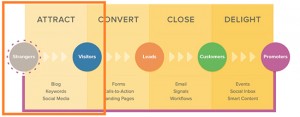In earlier blogs, I discussed the importance of budgeting for modern contract management, as well as the basics of identifying, assessing and mitigating risks in contracts. While these pieces talked about the importance of looking at the entire contract management lifecycle and the foundational nature of contracts to businesses, I’d like to get back to basics and review what those phases of the lifecycle actually look like.
Contract management is the process of administering the request, creation, negotiation, review, execution, and post-execution management of contracts and supporting documents and includes three major phases: pre-execution, execution, and post-execution.
The Pre-Execution Phase
The pre-execution phase of contract management covers everything that happens before you actually sign the contract. This includes request and intake, where the requestor first asks for a contract and pulls together all the critical details about the goods or services contracted, delivery dates and other milestones, and terms and conditions. It could also involve the submission of a third-party agreement for review.
Creating a first draft of the contract follows and includes requested terms, conditions, and other legal verbiage. The longest (and often most costly part) of the pre-execution phase is generally collaboration and negotiation of the agreement. Internal parties review the first draft, and once approved, the draft is sent to the third-party reviewers. Differences are worked out, and a final draft of the contract is approved and ready to move to the execution phase.
The Execution Phase
For a contract to be legally executed, authorized representatives or signatories from both parties must sign it using physical (i.e. wet) or electronic signatures. This can happen in person or sequentially. The signed contract must then be finalized and made available to relevant departments and entities to inform them of all commitments and obligations that need to be met.
The Post-Execution Phase
The contract management process doesn’t end when a contract is signed. There are several actions that take place in the post-execution phase including contract storage, reporting, and disposition. The final disposition of a contract comes when the contract terms are completely fulfilled or the contract reaches its end (i.e. expiration) date. At this point, the contract is either terminated or renewed and potentially amended. Terminated contracts need to be archived and securely stored to prevent unauthorized access and data theft.
How Automation Can Help
An effective contract management system can help a business keep track of all of its legal agreements from beginning to end and can result in faster contract flows and processes, more accurate contracts, improved legal and regulatory compliance, and ultimately less business risk. Unfortunately, though, a lot of contract management processes are still done manually creating unnecessary and completely avoidable business inefficiencies and risks.
All three phases of the contract management process can be automated and streamlined using contract lifecycle management (CLM) software. In the pre-execution phase, contract templates that utilize pre-approved contract language from clause libraries and real-time collaboration tools can speed up the process and help ensure accurate and easy version control. E-signatures offer a faster and more secure way to execute contracts, and automated CLM alerts and tracking can help ensure that all parties fulfill the obligations and commitments specified within the contract. CLM software also makes executed contracts readily available for searching, auditing and real-time reporting.
CLM software automates all phases of contract management from start to finish helping organizations mitigate legal and financial risk, while maximizing corporate and regulatory compliance.
A version of this post originally appeared here.
Business & Finance Articles on Business 2 Community
(78)




